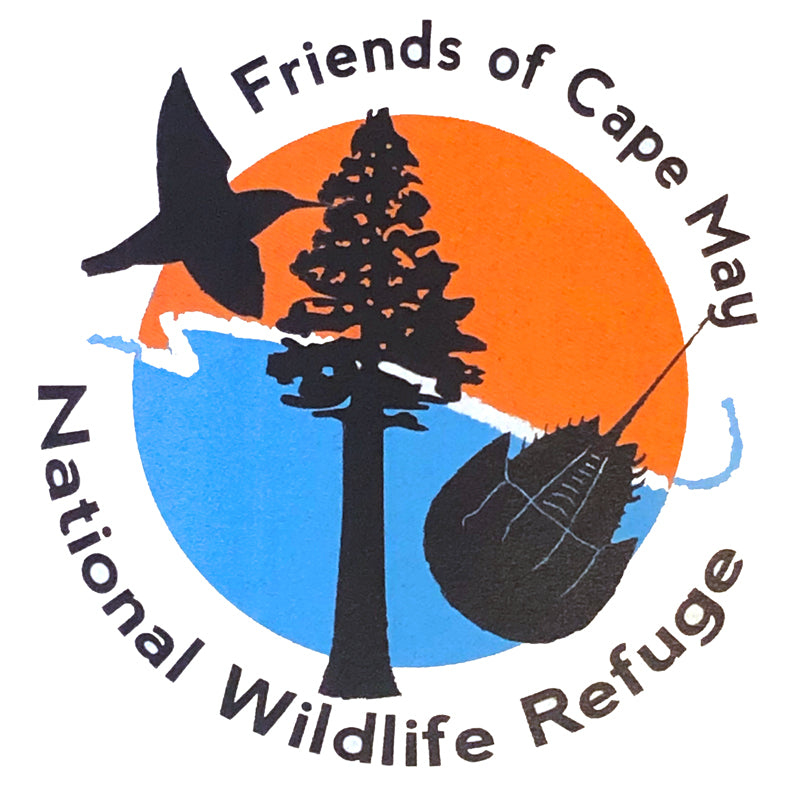The Refuge
The Cape May National Wildlife Refuge, NJ
About the Cape May NWR
The Cape May National Wildlife Refuge was established as part of the National Wildlife Refuge System in 1989. The U.S. Fish and Wildlife Service has acquired about 11,500 acres and the refuge continues to grow. Ultimately, the refuge will protect 21,200 acres of precious wildlife habitat in New Jersey’s Cape May Peninsula. Cape May National Wildlife Refuge’s key location in the Atlantic Flyway makes it an important link in the vast nationwide network of National Wildlife Refuges administered by the U.S. Fish & Wildlife Service. It ensures availability of critical habitat to hundreds of thousands of migratory birds each year, as these long-distance flyers travel along the New Jersey coast. The refuge is located within the portion of the Delaware Bay watershed that is designated a Wetland of International Importance by the Ramsar Convention. Due to the extent the area is used by migrating shorebirds – particularly the red knot, ruddy turnstone, semipalmated sandpiper and sanderling – the refuge is located in an area of the Delaware Bay considered to be hemispherically important to shorebirds.
Cape May National Wildlife Refuge is comprised of three units. The Great Cedar Swamp Division is at the northern end of the refuge in Dennis and Upper Townships. Habitats such as salt marsh, hardwood swamp, bog, grasslands and large tracts of forested uplands are used by wildlife such as blue-winged warblers, ovenbirds, and short-eared owls. The refuge connects with a state forest and the Pineland National Reserve.

GPS COORDINATES
Cape May NWR Refuge HQ (Kimbles Beach Rd)
74º52'46.59"W 39º5'59.19"N
Woodcock Trail (Delaware Bay)
74º52'51.63"W
39º5'38.2"N
Cedar Swamp Trail
74º42'11.74"W
39º15'7.23"N
Two Mile Beach Unit
74º51'30.55"W
38º57'2.18"N
Marsh Trail
(Two Mile Beach)
74º51'25.17"W
38º57'11.02"N
Cape May National Wildlife Refuge provides important habitat to a wide variety of migratory birds and other wildlife. It supports 317 bird species, 42 mammal species, 55 reptile and amphibian species, and numerous fish, shellfish and other invertebrates. Its value for the protection of migratory birds and their habitat continues to grow as wildlife habitat along the Jersey Shore is lost to development. Cape May Peninsula’s unique configuration and location concentrates songbirds, raptors and woodcock as they funnel south to Cape May Point during their fall migration. Faced with 12 miles of water to cross at the Delaware Bay, migrants linger in the area to rest and feed until favorable winds allow them to cross the Bay or head north along the Bay’s eastern shore.
Cape May National Wildlife Refuge’s marshes and tidal creeks provide important nursery areas and nutrient resources for many popular species of finfish and shellfish, including summer flounder, weakfish, striped bass, blue crabs and lady crabs. These fisheries provide abundant resources for wildlife, as well as for people. Seventy percent of the species sought by recreational and commercial fishermen depend on shallow water habitats for at least part of their life cycle Refuge visitors are welcome to enjoy a wide range of wildlife dependent activities here.
The Refuge Office is located at the Delaware Bay Division, at 24 Kimbles Beach Rd., Cape May Court House, NJ
Please visit our Partner Websites!
U.S. Fish & Wildlife Service

Cape May NWR
Cape May County
ESupwana Meadows NWR
Salem County
Edwin B. Forsythe NWRAtlantic County

